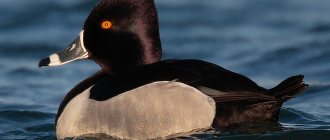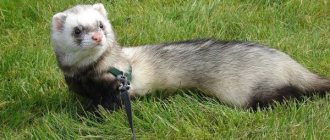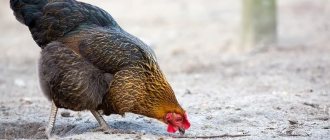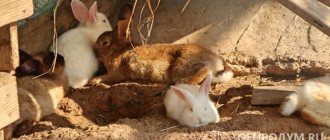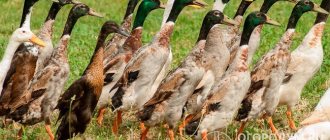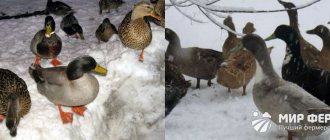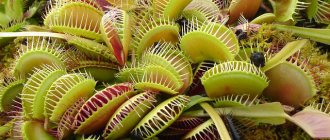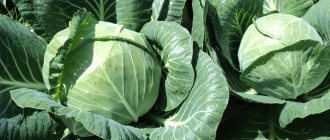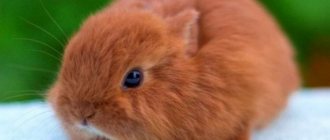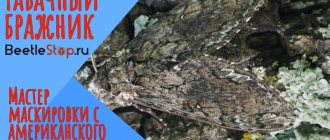Many owners prefer hatching ducklings in an incubator to natural hatching. This is especially true for ducks like mulard. This hybrid species, distinguished by more advanced characteristics, was the result of crossing drakes of musky ducks with mallards. Such birds do not live in natural conditions. New individuals are bred only by humans, because hybrids are sterile. The main goal is to compensate for the shortcomings of both duck breeds. As a result, the mulards turned out to be cleaner and quieter.
Incubation and its main features
In order for the hatching of ducklings in incubators to go like clockwork at home, you need to learn as much as possible about this process.
In poultry farming, incubation refers to the natural process of development from the laying of eggs to the appearance of chicks. In practice, not all ducks become brood hens. And the brood size is not as large as we would like. Private farms solve these problems with the help of incubators.
The whole process goes through three stages:
- selection of eggs and their disinfection;
- actual incubation;
- hatching of chicks.
The success of breeding mulards at home, if an incubator is used, is determined by many factors: temperature, ventilation, humidity.
The only similarity between incubation and brooding is the result. That is, the birth of chicks. But these two processes have differences that significantly affect the number and survival of duck offspring.
Natural hatching is the best option. The duck instinctively hydrates the eggs better. Hatchability reaches 100%, but chicks do not begin to hatch at the same time.
An incubator is an artificial replacement for a hen. It will be an excellent solution if the duck refuses to hatch her ducklings. An additional plus is the large capacity (up to hundreds of eggs). The female hatches on average about fifteen.
General characteristics and differences from other domestic ducks
Some sources mislead readers by offering descriptions of the “Mulard duck breed.” In fact, “mulards” are neither a breed nor even a cross. This is the general name for all birds resulting from interspecific crosses, using “indo-ducks” and domestic ducks of known breeds as parent forms.
“Muscope” (pictured left) and domestic (right) ducks of various breeds are used as parent forms when breeding interspecific hybrids – “mulards”.
"Indo ducks" or "muscovy" ducks belong to a separate species related to the "Domestic duck" (Anas platyrhynchos L.). When representatives of these two species mate, individuals are obtained that exhibit the best qualities of their parents: from the “musks” they inherit unpretentiousness, excellent health and consumer properties of meat, and from domestic ducks of the “heavy” varieties - early maturity, a high level of feed conversion and excellent meat productivity.
Standards of appearance and basic parameters for “mulards” have not been developed, which is not surprising: the group of birds united by this name is too diverse, and the characteristics of each individual depend on the selection of the parent pair. However, the most common properties of such ducks can be seen in the table:
| Parameter | Characteristic |
| Class | Birds |
| View | Interspecific hybrid |
| Group name | "Mulard" |
| Type of use | Meat |
| Plumage colors | Various, predominantly white, often with a dark spot on the head |
| Hatchability and safety of young animals | Under the hen high (80-100%), in the incubator medium (57-60%) |
| Adult weight | At the age of 2.5-3 months, about 4 kg; if kept for more than 6 months, they can gain up to 7 kg |
| Feed conversion | High |
| Registration in the State Register of the Russian Federation | Absent |
Representatives of hybrid birds may have different plumage colors, but white with a dark spot on the head predominates
The first Mulard ducks appeared in France in the 60s of the 20th century as a result of crossing Indo duck males with Peking females. The hybrids were considered successful and quickly spread throughout European farms. Poultry farmers very soon realized that in order to breed birds of this variety, it was not necessary to purchase original individuals from; You can form parental “families” from “musks” and domestic ducks available to each owner.
A similar practice of obtaining “mulards” still flourishes today. It is considered optimal to cross “Indo-duck” drakes with females of the “Peking”, “White Allier”, “Rouen” or “Orpington” breeds, but other combinations of parental forms are also possible, so the young may look different.
The modern market offers a huge number of chicks of such ducks, while the buyer risks paying a considerable amount for ducklings of very dubious quality
Reputable poultry companies continue to work on creating new varieties of “mulards” that are more reliable in terms of productivity or have other properties that are interesting for future owners. Thus, a well-known company sells ducklings that have autosex, as well as chicks of several hybrids, ideal for fattening (fattening in order to obtain a large, fatty and tender liver) and in this sense capable of competing with geese.
What determines a good hatching of ducklings?
If you are going to breed mulards using an incubator, you should choose a reliable device, and before use you need to carefully study the instructions. All recommendations related to humidity and temperature conditions for incubating eggs must be strictly followed. The same applies to good ventilation and uniform heating of the masonry. Particular attention should be paid to the quality of eggs. Careful selection in all respects will contribute to maximum results.
Eggs are selected:
- by weight (75-90 grams);
- in appearance of the shell - it must be clean, dense and smooth (if there are cracks, lime build-up, this is defective material);
- in shape - pay attention to any deviations from the standard; anything too long or round is not suitable;
Look at the egg in the light or through an ovoscope. The protein is transparent and without impurities. The yolk is one and located in the center. Small air chamber. Its place is under or near the blunt end of the egg.
Regarding natural incubation: it is important to observe the rules of hygiene in the nests. Laying hen bedding is replaced with fresh ones every day. This will prevent the development of infections. There should be no bird in the nest when the eggs are weaned.
Possible problems during cultivation
The main question that concerns a novice farmer is how long to keep mulard for meat. Birds are ready for slaughter at 3-4 months; sometimes birds are left for a longer period so that they gain weight, but this should not be done. Mulard can indeed grow up to 7 kg, but the meat will lose its juiciness, tenderness, and become rough. Therefore, the first problem is to carry out the slaughter on time.
When feeding drakes for foie gras, due to inexperience, you can make a mistake, which is why the bird will die before slaughter.
The next difficulty is the need to carry out the crossing yourself, otherwise you will not be able to get ducklings. Some farmers prefer to buy ducklings and raise them rather than breed them themselves.
Like all birds, mulards can get sick, the main reason is a violation of housing conditions or feeding technology. Males may experience outbursts of aggression and begin to attack each other, most often this is caused by the fact that the area of the poultry house is very small.
Attention! For all their easy-going and peaceful nature, birds can pinch painfully.
Storage conditions for raw materials
Eggs must be properly preserved before being placed in the incubator. The basic rule is no refrigerator. It is better to build pallets from sheets of plywood and place them in a cool room. It should have good ventilation, the temperature should be kept at + 12 degrees, and the humidity should be kept within 70%. The tray is kept perfectly clean. Any fungi and bacteria easily pass through the porous shell.
The eggs are laid out on a tray with the blunt end down. Definitely in one row. Eggs should be turned over from time to time. It is best to do this 4 to 6 times a day. This simple procedure greatly increases the chances of a large brood.
It is important how many days you store the selected material - no more than seven is acceptable.
Egg selection
The quality of the offspring depends on the correct implementation of all actions at the preparatory stage. Experts advise first of all to pay attention to the litter in the duck nest.
To avoid mold, infectious diseases and parasites, it is recommended to change it daily. Under favorable incubator conditions, the pathogenic microflora remaining on the shell penetrates inside and has a negative effect on the embryo.
Eggs must be carefully sorted before being placed in the incubator.
Experts advise storing them in rooms with good ventilation, a temperature of +8-+13°C and a humidity level of about 75%. You should not put eggs in the refrigerator. Special plywood trays are ideal for collecting. The testicles are placed in one layer, with the blunt end pointing down.
It is recommended to turn prepared eggs three times a day. This will maximize hatchability. It is better to use fresh eggs for the incubator: if they sit for some time, the development of ducklings is inhibited.
Selection procedure
Duck eggs are covered with a thick, porous shell with a faint greenish tint.
Those that have:
- non-standard shape: round, excessively elongated;
- shell deformation, chips, cracks or other defects;
- limescale build-up;
- 2 yolks detected during ovoscopy (light diagnostics).
It is advisable to take for laying eggs of a slightly elongated standard shape weighing about 80 grams (fluctuations from 75 to 90 grams are allowed) with a transparent yolk located in the center and an air chamber at the blunt end.
Egg shells should be clean, thin and smooth. It is advisable to store raw materials for bookmarking for no more than 7 days.
Ovoscopy allows you to select the best specimens. Thanks to translucency, uneven shell thickness, small cracks, spilled yolk or mold spots inside the egg become noticeable.
Can eggs be washed?
Poultry farmers know that duck eggs are highly contaminated. For this reason, many people are concerned about cleaning them. Some categorically claim that they cannot be washed. Experienced poultry farmers say that shells that are more than 50% contaminated must be cleaned.
In the wild, ducks themselves involuntarily clear the shells of droppings by moving over them after swimming. The cleaning function is performed by wet feathers and paws.
Washing should be done with extreme caution: any careless movement can damage the egg. Chipped and cracked specimens are not suitable for bookmarking.
In addition to washing, it is necessary to disinfect eggs with a weak solution of potassium permanganate, because duck eggs are often contaminated with salmonella, mold, and pathogenic fungi. Some poultry farmers advise removing visible dirt with a soft sponge when disinfecting.
Should you wash eggs?
Eggs suitable for laying are disinfected. This is done using formaldehyde vapor. Formalin mixed with water is poured into the container. Then it is transferred to the chamber where the eggs are already located. During a chemical reaction, vapors are released. They destroy harmful microorganisms. This cleaning will only take half an hour. A hood will help get rid of steam in the chamber.
Another reliable and safer method of disinfection is quartz treatment. To do this, you will have to purchase a mercury-quartz lamp. The optimal distance from it to the shell is at least 70 cm. The whole procedure will take 10 minutes.
Now let’s talk about whether it’s possible to wash duck eggs before laying them. This cleaning method is almost never used. It is justified only if the shell is very dirty. Each hatching egg is then wrapped in mesh material and dipped in a washing solution. Then take it out and let the water drain. You cannot rub the shell with a cloth. This destroys the protective shell.
Breed characteristics
Mulards (in some sources mullards) are a special breed of poultry, artificially bred by crossing a musk duck and an ordinary domesticated mallard. The goal of such selection was to obtain hybrids devoid of the disadvantages inherent in the ancestors. It was achieved, but due to the fact that the parents belong to different species, the Mulards cannot have offspring. They are bred only by crossing.
The appearance of mulards is practically no different from what indo-ducks look like, except for their size - they are larger than their parents. Feathers are usually colored black, gray and white, with various variations. The body is dense, proportional, the wings are well developed. The eyes are usually dark in color, but there are also light-eyed individuals.
Mulards are raised for their meat and liver, usually females are slaughtered for meat, and drakes are raised for tasty and healthy liver, which is then used for culinary purposes (the famous French dish foie gras).
The advantages of this breed include:
- rapid weight gain;
- absence of layers of fat in meat;
- excellent taste of poultry meat and liver;
- good immunity;
- cleanliness and good-natured character.
Preparation for bookmarking
The next stage is preparing the incubator. The device must be clean. It is preheated to +35 degrees. A tray with water is placed at the bottom. The fluid level must be carefully monitored.
You should also adhere to the following rules:
- the raw materials are heated at room temperature before being placed in the incubator;
- it is important to lay the eggs correctly, in the correct sequence: large ones come first, then a break is taken, and after 4 hours medium and small specimens are laid out;
- The hatching egg is placed with the blunt side up; this position improves the hatchability of ducklings.
It is important to constantly monitor humidity. A special device can be bought or made from a regular thermometer. A piece of material is tied to its lower end. Its free end is dipped into a container of water. The device now shows the humidity level. Within 7 days after laying, the optimal indicator is considered to be 30 degrees. Then it is reduced by three degrees.
Throughout the incubation of mulards, the eggs are turned frequently. In some devices this function is automatic. If there is none, the procedure is carried out manually (gradually increasing to 6 times a day). The germinal discs and embryo thus do not dry to the shell.
With an automatic turning system, the eggs must be covered with nets to prevent them from falling out. Markings will help make manual turning easier. Before being stored, raw materials are marked at both ends with different icons (checkmarks and crosses or others).
Possible errors during incubation
You can prevent the appearance of weak offspring or mass death of embryos by timely understanding the main mistakes and the basic rules of incubation hatching.
When you first decide to start breeding ducklings, you should identify the most common problems that need to be given special attention:
- high temperature: overheating leads to the death of the offspring inside the shell from heat stroke at any stage;
- uneven heating: the eggs must be mixed before cooling and airing, moving the specimens located at the edges to the center and vice versa;
- increased humidity: starting later, hatching lasts for several days; some chicks may choke on amniotic fluid at the time of pipping;
- insufficient humidity: the weight of the testicles decreases, large air chambers are noticeable when lumen, the majority of the chicks are small and hatch prematurely;
- lack of ventilation: chicks appear with defects, deformities, the location of many embryos is incorrect - towards the sharp edge of the head.
You can identify problems after the output is complete. Please note the following:
- Eggs that were stored for a long time before being placed in the incubator and that were not warmed up sufficiently are characterized by late hatching.
- Weak chicks that die on the first day emerge from defective eggs.
- By maintaining a high temperature in the incubator in the second half of the incubation period, the early hatching of chicks begins.
- Using defective eggs or lack of moisture control by the breeder results in difficult hatching.
- A large number of unfertilized eggs indicates insufficient vitamin nutrition of the parent couple.
It is often possible to deal with the main problems only after several bookmarks. It is possible to establish experimentally the factors leading to death during the incubation period or the appearance of weak ducklings.
Ideal conditions in the incubator
In the first week, the temperature is kept at +38 degrees. Then it decreases by two tenths of a degree (to +37.8). At this time, humidity should not exceed 60%. These indicators are optimal for the next two weeks. The eggs are turned 4 times.
The third stage of egg incubation begins on the 15th day and ends on the 25th day. Temperature and humidity remain the same. The number of revolutions increases up to 6 times. This is the best time to ventilate and cool the future chicks. To do this, open the incubator 2 times a day for about 20 minutes.
A duck egg is a storehouse of fat, but it has relatively little water, which is why it easily overheats, so if you do not monitor the heat levels in the incubator and do not ventilate, it can rise under the shell to + 42 degrees, and overheating is unacceptable.
The last period covers 26-28 days of incubation. The temperature is reduced to +37.5 for a small number of eggs and to +37.2 if the clutch is large. Humidity during this period is 90%. The shell will become softer, and it will be easier for the duckling to break through it.
When the chicks begin to hatch, a lot of liquid leaks through the pores in the shell. Spraying the eggs throughout the hatching period will help make up for these losses. Pure water or a weak solution of potassium permanganate will do. The latter will prevent bacteria and infections from developing.
Please note the following table:
Plucking the carcass
Dry duck plucking method
To ensure that the feathers easily come away from the skin, the carcass must be doused with hot water. Boiling water should not be used, otherwise the meat will look unattractive. After treatment with hot water, do not immediately pluck the duck - you can burn your hands. Remaining hairs and fluff can be removed by singeing.
IMPORTANT: If you use a knife when plucking, you must be careful not to damage the skin, otherwise it will spread.
If the carcass will be stored in frozen conditions, it is better to pluck it dry - feathers are plucked with a knife, starting from the chest, and then on the back and shoulders. The tail and wings are processed last.
Have you ever experienced unbearable joint pain? And you know firsthand what it is:
- inability to move easily and comfortably;
- discomfort when going up and down stairs;
- unpleasant crunching, clicking not of your own accord;
- pain during or after exercise;
- inflammation in the joints and swelling;
- causeless and sometimes unbearable aching pain in the joints.
Now answer the question: are you satisfied with this? Can such pain be tolerated? How much money have you already “wasted” on ineffective treatment? That's right - it's time to end this! Do you agree? That is why we decided to publish an exclusive interview with Professor Dikul, in which he revealed the secrets of getting rid of joint pain, arthritis and arthrosis.
How to identify non-viable embryos
If we hatch Mulards using an incubator, the eggs must be examined regularly. The best time for this procedure is the 8th, 15th and 25th day. If the embryo does not develop, the egg is disposed of.
This study is called ovoscopy. Essentially, this is candling an egg to see the condition of its contents. The simplest ovoscope can be made independently from available materials. You will need a standard cardboard box. A light source is installed at the bottom - an incandescent lamp with a power of at least 10 W. A hole is cut in the top of the box, slightly smaller than the hatching egg itself. The egg is then placed in this recess and rotated slowly. In the light you can see what the embryo is like. The procedure is carried out only in a warm place and quickly.
Premises requirements
Incubator structure
Incubation of hybrids should only be carried out in a well-ventilated area, since the fetus gains access to oxygen thanks to the eggshell. Poor ventilation affects the health of the offspring - they are often born weak or with congenital defects.
There should also be no other domestic animals in the room, especially predatory ones, which can not only disrupt the incubation regime, but also destroy part of the brood. The cold floor in the room must be covered with hay.
In addition to the correct temperature in the room, it is necessary to maintain sufficient lighting, especially in the area where the eggs are located. Lighting requirements increase when the breed in question is grown artificially.
Stages of embryo development
The first week in the development of the embryo is the most critical. At this time, the internal organs of future chicks are formed. The heartbeat can be traced. The length of the fetus reaches 2 cm. Gradually, the embryo begins to breathe more intensely. First, oxygen from the yolk comes into play, and then breathing occurs through the pores in the shell. Now the main thing is not to overcool or overheat the eggs.
The first transillumination occurs on the eighth day. The blood network is clearly visible, and only a shadow is visible from the embryo itself. The skeleton begins to actively form.
Upon next inspection, the fruit is quite large, and the inner surface of the shell is covered with an embryonic membrane. Thanks to it, the process of gas exchange and respiration occurs.
During the last period of incubation, the chick is almost completely formed. Its outlines are clearly visible. You may also notice slight movement. A dead embryo is a motionless dark clot. A sign of delayed development of ducklings is a light transparent spot. It is concentrated at the sharp end of the egg. There are no blood vessels.
If the embryo dies in the first week, the yolk will be surrounded by a bloody ring. At a later stage, blood vessels are not visible. Sometimes even a fully formed chick may not hatch. There can be many reasons for this: from non-compliance with duck incubation conditions to hereditary factors or infection.
Caring for mulards after a month
Fourth week. Bone tissue and feathers are strengthened by adding one small handful of fodder tricalcium phosphate and ordinary construction chalk to the mash each feeding. Two weeks give two no and then alternate.
Beetroot, cabbage, and pumpkin leaves are added to food.
Ducklings run free from morning to evening, nibble grass, their growth slows down, this is how it should be.
Fifth and sixth weeks. The ducks are almost grown. The “Rost” compound feed is replaced with a fully rationed adult feed. The rest is given as before.
From this age, waste from the kitchen, garden and vegetable garden is fed. To prevent ducks from plucking each other's feathers, add one pinch of sulfur at each feeding.
Running around the garden is limited so that they spend less energy and gain weight.
From morning to 16 o'clock they walk freely, and then are driven into an enclosure. They have dinner there and go to bed from there.
There should always be clean and dry bedding in the house. Do not close it tightly at night to avoid stuffiness.
Seventh week. The ducks are fully feathered with adult feathers. After two months of keeping, the livestock is removed, first the large ones, and then the rest.
The skin of the finished carcass acquires a pleasant yellow color due to the corn. The meat is dark in color, a bit like game.
We told you step by step how to raise Mulard ducks in 60 days. With proper maintenance, a good result can be expected in the form of healthy dietary meat.
Anything to add? Share your experience in the comments; any advice is important for beginners.
Good luck in growing Mulards!
Subscribe to site updates and our channel “Chicken” in Yandex.
See you later, colleagues! In the meantime, we will prepare new and interesting information for you!
Did you like our tips? Share with friends on social media. networks!
The appearance of chicks and their preservation
On the 27th day, the ducklings in the incubator are already actively pecking. The weight of one duckling ranges from 55 to 70 g. All chicks should be born within 1-2 days. Healthy ducklings hatch on their own, without human help. First, a hole appears in the middle part. Gradually its value is growing. Then the baby rests his paws on the sharp edge of the egg and cracks the shell.
If a chick does not hatch for a whole day, it needs help. The hatching egg is examined with an ovoscope. Then small holes are made around the circumference to make it easier for the duckling to handle the shell. If blood vessels in large quantities are visible during ovoscopy, the integrity of the egg cannot be violated without permission. The chick may die from blood loss.
When the babies hatch, they are transferred to dry rooms with good ventilation. Air temperature is within +30-33 degrees. Here the ducklings dry out. When the hatching process is completely completed, you can begin sorting the chicks. Weak and non-viable mulards are immediately discarded.
Rejection process
Thanks to candling, some specimens are removed in a timely manner:
- On days 1-6, when the embryo dies, a blood ring surrounding the yolk is visible.
- Embryos that die in the second week are called frozen. The fetus is visible as a shapeless dark inclusion; blood vessels are not visualized.
- Experts call ducklings that died in the last stages of development “dead.” These are fully formed but unhatched chicks. The ovoscope allows you to see that the body of the embryo in some of the eggs occupies almost the entire volume. The acute part often lacks allantois.
A large number of dead chicks can be caused by several reasons for the arrest of development:
- infectious lesions;
- hereditary pathologies;
- excessively high or low humidity;
- dystrophy of embryos;
- disruption of the gas exchange process;
- overheating or insufficient heating.
Good hatch rates can be achieved in the absence of unfavorable conditions and using high-quality raw materials.
High-quality and low-quality young stock
A healthy day-old duckling is determined by the following characteristics:
- he stands firmly on his paws and is quite mobile;
- has a good appetite;
- the body is evenly covered with down;
- eyes bulging and clear;
- the beak is not dirty;
- the tummy is tight, not saggy;
- The umbilical cord is healing well.
The hatched mullard cannot feed in the first few hours of life. It is important to teach babies to eat and drink. Liquid porridge, finely chopped eggs and herbs are suitable for this. The chicks are kept warm (at about +30 degrees). In the first days, the room where the ducks live is constantly illuminated. Then the daylight hours are reduced to 18 hours. From the age of two months, young animals need light 8 hours a day.
Mulard weight
To monitor growth and development, it is recommended to use a table of live weight indicators.
| Age, weeks | Drakes, g | Ducks, g |
| Daily allowance | 48 | 46 |
| 2 | 300 | 250 |
| 4 | 800 | 750 |
| 7 | 1750 | 1400 |
| 8 | 2100 | 1600 |
| 9 | 2350 | 1800 |
| 10 | 2750 | 2000 |
| 11 | 3100 | 2200 |
| 12 | 3400 | 2450 |
Where and when do ducks lay eggs?
Birds begin to lay eggs at approximately 3 a.m. and finish by noon.
Note! Since the temperature of collected eggs must be maintained at least 5-12 degrees before incubation, they begin to be collected in a cold room from 5 am. Eggs for incubation are collected hourly. Such an egg can be stored for no more than 4-5 days.
It also matters how the duck lays eggs. She can lay in a nest on a specially placed litter. You should not place the nest under bright lighting, near other animals, or on the aisle. Laying hens are afraid to enter such nests.
Diseases
In general, mulards are characterized by good health and good immunity, but there are several diseases that can cause serious harm to ducks. These include cloacitis and aspergillosis. The first disease is the result of vitamin deficiency and manifests itself in the formation of a mucous film on the cloaca. In the advanced stage of the disease, pus may appear. The disease can be treated quite well, the main thing is to detect it in time. To do this, the affected area is cleaned of pus and mucus, treated with iodine and zinc ointment is applied.
The next disease is called aspergillosis. It appears from the interaction of ducks with a fungus contained in old feed or bedding straw. Fungal spores enter the birds' respiratory tract and cause them to become lethargic and lose their appetite. Then more serious symptoms appear in the form of increased breathing, vomiting and paralysis of the limbs. More than half of cases of infection with this terrible disease are fatal. In the early stages of the disease, birds can be cured by adding Nystatin to their food and copper sulfate to their drink.
Another, although not fatal, but rather unpleasant ailment is protein deficiency, which manifests itself in feather pecking. To eliminate the problem, you need to include more protein in your food and place cups with shell rock or gravel. Another cause of the disease is too much bran and vegetables in the poultry’s diet. This food has a laxative effect, which leads to the leaching of important minerals from the body. To prevent most infectious diseases, birds must be vaccinated on time, and to prevent vitamin deficiencies and microelement deficiency, the diet must be properly planned, as well as vitamins and mineral supplements given.
Distinctive features
The main difference between this species is that domestic Mularda ducks are not able to reproduce. These birds are sterile, and even if, under favorable conditions, the male covers the females, the eggs will remain unfertilized. That is why such a hybrid can only be bred through natural crossing of representatives of two different breeds or by artificial insemination. Thanks to this feature, many farmsteads breed such ducks and geese, the maintenance of which is not difficult for an experienced farmer.
Dear visitors, save this article on social networks. We publish very useful articles that will help you in your business. Share! Click!
Also, these ducks are distinguished from other breeds by their coloring - white plumage with a black spot on the head. These birds look attractive - they have a dense build and good health. Mulards fatten up much faster than other ducks and geese.
Birds of this breed have a calm character, they are balanced, quiet, and very clean. In contrast, geese are too noisy and cackle, so such a neighborhood as a goose and Mulard is undesirable. They are unpretentious in food, easily adapt to different weather conditions and temperature conditions, and have good immunity. Such birds fly more productively than their relatives.
Is it possible to hatch birds from hatching eggs?
As was already noted above, ducks of the Mulard breed are sterile, so they cannot produce offspring. For these purposes, an incubator or a hen is used. The selection of eggs for offspring should occur throughout the week. It is more advisable to use a hen, since this can be done more than once.
This information will help you understand why chickens don’t lay eggs in winter and what to do about it.
The hen's nest is located in a quiet place. To do this, you can use a wooden box or simple plywood, which is used to enclose a corner in the shed. Be sure to place a layer of hay or straw at the bottom. 15-20 eggs are laid under the hen. She covers them with her plumage. After 10 days, you should use a portable ovoscope. It will allow you to check the fertilization of the eggs. Those eggs that are light in color and lack blood vessels should be removed. Eggs with dead embryos may be present. They also need to be thrown away.
The hen may leave the nest several times to eat, drink and bathe. For her, you need to organize drinking and a feeding trough located nearby. The hen simply has to bathe. With the help of wet wings, she is able to moisten eggs.
Find out how long a laying hen lives from the article.
Features of keeping hybrids
In order to obtain high-quality meat, the duck must be raised in compliance with certain rules. If they are violated, it will not be possible to obtain high productivity of mulards.
Care
Ducks are ideal for both industrial and private rearing. Caring for a bird is not difficult. Mulards need a small insulated shed where they will be locked at night, and a walk.
The temperature in the poultry house should be no lower than 16 degrees and no higher than 25 degrees. Humidity should be maintained between 60% and 70%. During the day, the entrance to the poultry barn should be constantly open, so that if the weather worsens or gets tired, it can easily return to it. The floor of the poultry house should be covered with a thick layer of sawdust or straw, which will allow the mulards to feel comfortable even in cold weather. The litter needs to be changed when it gets dirty. You can't let a bird walk on a dirty floor
It is very important to ensure that there are no drafts in the room where the ducks are kept. The area of the barn is calculated from the norm: 1 m² for 3 heads. For an enclosure this figure is: 2 m² per head
For an enclosure, this figure is: 2 m² per head.
A pond is not required for mulards, but a large basin with clean water in which the bird can swim if desired is necessary. Without this, the bird's feather will not be of high quality.
As a rule, poultry are not left for the winter and the flock is slaughtered before persistent sub-zero temperatures. This is due to the fact that these ducks are not capable of reproduction and, therefore, cannot be kept as breeding ducks.
Duck ready for slaughter
They do not tolerate the cold well and lose significant weight, and also begin to get sick, which is why the meat obtained in winter is not of high quality. In order to have ducklings in the cold season, it is best to simply increase the number of the last batch of birds, and, having slaughtered them, load the carcasses into the freezer.
Young animals are bred in the spring in April-May. You can get it either on your own, for which the Peking and Muscovy ducks available on the farm will be crossed, or by purchasing it from an industrial farm. Crossbreeds of other duck breeds are not mulards.
Conditions and food
The main conditions for keeping Mulard ducks comfortable are a poultry house or barn, a swimming pool and a place for walking. The dimensions of the room should be calculated based on the number of birds - 1 m² per 3 heads. The barn should be warm so that the ducks can spend the night comfortably and wait out bad weather. The walking area must contain at least 2 m² per duck.
Norms and diet for feeding mulard ducks
Newly hatched chicks cannot feed on their own; they need to be taught to do so. To do this, you will need rice or millet porridge with the addition of a boiled egg. This mixture is scattered on the chicks, then they will learn to catch food. The same food is laid out on a dark surface, the chicks will begin to peck at it. On the 2-3rd day of life, the ducklings will be able to feed on their own.
The diet of young animals mainly consists of boiled porridge with the addition of milk or low-fat cottage cheese. You can add chopped herbs, boiled potatoes, beets, carrots. Adding duckweed to the diet promotes rapid growth of chicks and improves their health. The diet of adult ducks consists mainly of feed, corn and wheat.
In order for food to be properly digested, domestic ducks need gravel. Mulard gains weight most quickly when eating corn. To avoid cannibalism, calcium and sulfur are added to the ducks' diet. Additional products for feeding Mulards:
- Table salt is a source of sodium. It must be finely ground, dissolved in water and mixed with feed, so as not to cause poisoning in the livestock.
- Yeast is a source of B vitamins and can be given in any form from the age of 10 days.
- Meat and bone meal is a source of protein, recommended from 5 days of life.
- Fishmeal contains a large amount of protein, B vitamins, calcium and phosphorus. You need to feed with fresh low-fat flour. You can replace it at home with small fish, ground in a meat grinder.
Chicks are fed three times a day until they are one month old, and later two feedings are sufficient. The container with food should not be filled to the brim, since ducks eat very quickly and scatter food.
Reviews
- Oleg: “I have long wanted to raise ducks just for meat. I was offered to buy the Mulard breed, which met all my requirements. I'm happy with the purchase so far. Of course, I’m not particularly happy with the lack of offspring. To do this, I have to pick eggs for the incubator. But their meat is very tasty and nutritious. I carry out slaughter in 2 months. By this age, their weight already reaches 3.5 kg.”
- Tatyana: “I breed a large number of ducks, among which there is the Mulard breed. These ducks don't require much attention. The main thing is that they have something to eat, drink and where to shop. Sometimes I bring them into a clearing where there is a small pond. They eat grass there and splash in the water. My offspring are hatched using a hen. It doesn’t matter how the ducks lay eggs; for incubation, you have to constantly monitor when they started laying eggs.”
- Sergey: “Mulard is an excellent option for those who raise ducks only for meat. This is probably why this breed is so in demand today. I also decided not to lag behind others, and a year ago I bought these birds. I feed them mixed feed, mash, and vegetables. I make sure to keep my drinking water clean. Since there is no pond near us, I made one at home myself. I dug a trough into the ground, filled it with water, and they splash around there for their own pleasure.”
Read also In a dream, whitewash trees
